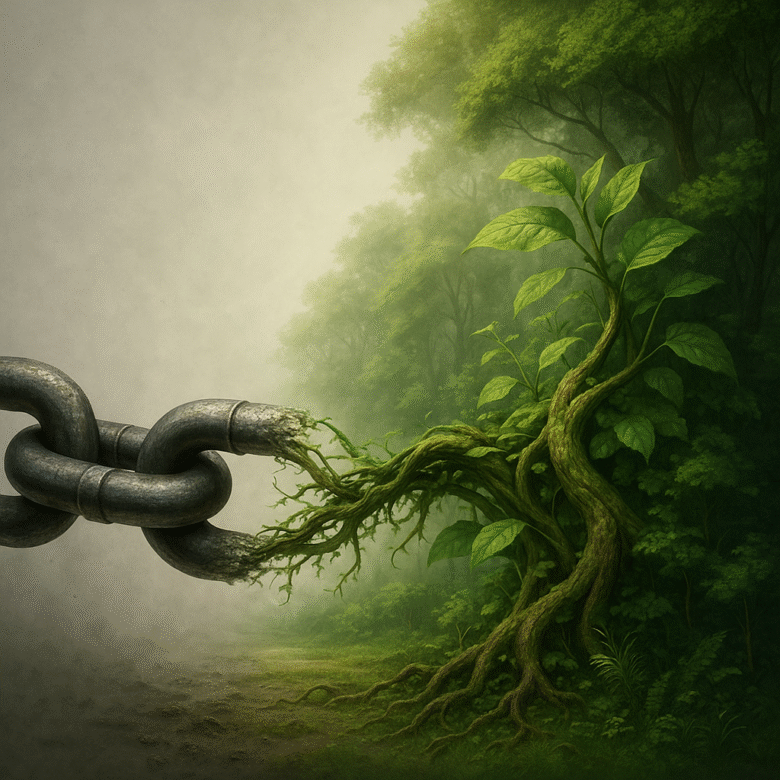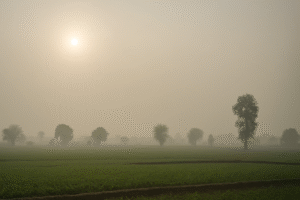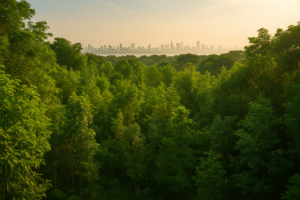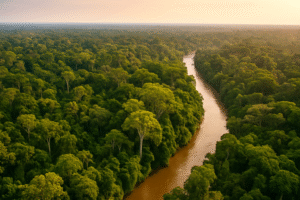Fun fact: Each year, humanity clears or degrades habitat equivalent to about 30 football fields every minute—a staggering erasure of life.
When “When Biodiversity Dies, We Die: The Hidden Chains That Break First” becomes not a slogan but our reality, we must look at what fractures first. The collapse starts with invisible links: pollinators, microbes, corridors, and soil health. These hidden chains begin to snap—and when they do, they resonate through agriculture, water, health, justice, and the economy.
We often treat biodiversity loss as “nature’s problem,” distant or abstract. But the cracks are already forming in our daily lives, often unnoticed. This blog uncovers those hidden chains, names who pay first, and asks: can we begin healing before the whole structure collapses?
Biodiversity as Invisible Infrastructure
Claim: Biodiversity is the hidden backbone of ecosystem services — when species vanish, the infrastructure fails.
We depend on species interactions for services—pollination, nutrient cycles, water purification, carbon storage, and flood buffering. Yet we treat them as free until they fail.
In India, commons such as forests and community lands deliver ecosystem services worth USD 90.5 billion annually on average (in a range of USD 24–192 billion), especially through services like water purification, soil fertility, carbon sequestration, and regulation.
The NCAVES (Natural Capital Accounting and Valuation of Ecosystem Services) initiative in India is attempting to make nature’s contribution visible in government accounting: cropland, water, forests, and biodiversity are being quantified to integrate into policy decisions.
In many regions, despite visible “greening,” net productivity declines—evidence that quantity doesn’t equal quality. Forests may cover land, but lose ecological function under stress (climate, invasive species, degradation).
Studies show large biosphere reserves like the Sundarbans hold enormous ecosystem service values when properly accounted for, especially for carbon, storm buffering, coastal protection, and fisheries.
These services are not luxuries—they are life support. Once they erode, our crops fail, our water is contaminated, and flood control weakens.
First Fractures: Subtle Failures that Cascade
Claim: The system fractures through subtle, cascading failures—not abrupt collapse.
The first breaks show in small shifts: changes in microbe communities, loss of obscure species, and declining connectivity.
Many species vanish before we even catalogue them—fungi, microbes, soil invertebrates. Their disappearance weakens resilience, soil health, and detoxification.
Trophic cascades: the removal or reduction of one predator or herbivore species triggers a chain reaction—plants, insects, and disease vectors shift.
Fragmentation kills connectivity: India protects less than 5 % of its land effectively. Many priority landscapes lie outside protected areas. Genetic isolation, reduced migration, and local extinctions follow.
Climate change presses species to move, but fragmented, disturbed terrain prevents migration, trapping populations in unsuitable zones.
In India, some ecoregions show projections that ecosystem service values may decline by ~7.5 % between 2020 and 2050, even while grasslands expand—indicating complex trade-offs and weakening services.
These small fractures may not make headlines—but they weaken the whole web.
The First to Fall: Inequality and Unseen Victims
Claim: Biodiversity loss is not evenly borne. Marginalized communities suffer first and worst.
When ecosystem services degrade, those with the least buffer pay the steepest price.
Rural, Indigenous, forest-dependent communities lose their livelihoods: fuelwood, fisheries, medicinal plants, wild foods all shrink.
Powerful interests often reap gains: for example, in Gujarat, the Narayan Sarovar Sanctuary was reduced in size (de-notified) to allow mining, and people and biodiversity both lost.
India’s Biological Diversity Act (2002) mandates equitable sharing of benefits, but enforcement is shaky; corporate or industrial interests frequently override local rights.
Urban poor suffer from degraded ecosystem buffers: flood control, water purification, and air regulation decline—informal settlements have no margin for disaster.
Those with resources may move or build engineered backups. The poor must live with the collapse.
Thus, biodiversity loss is also a crisis of justice, power, and voice.
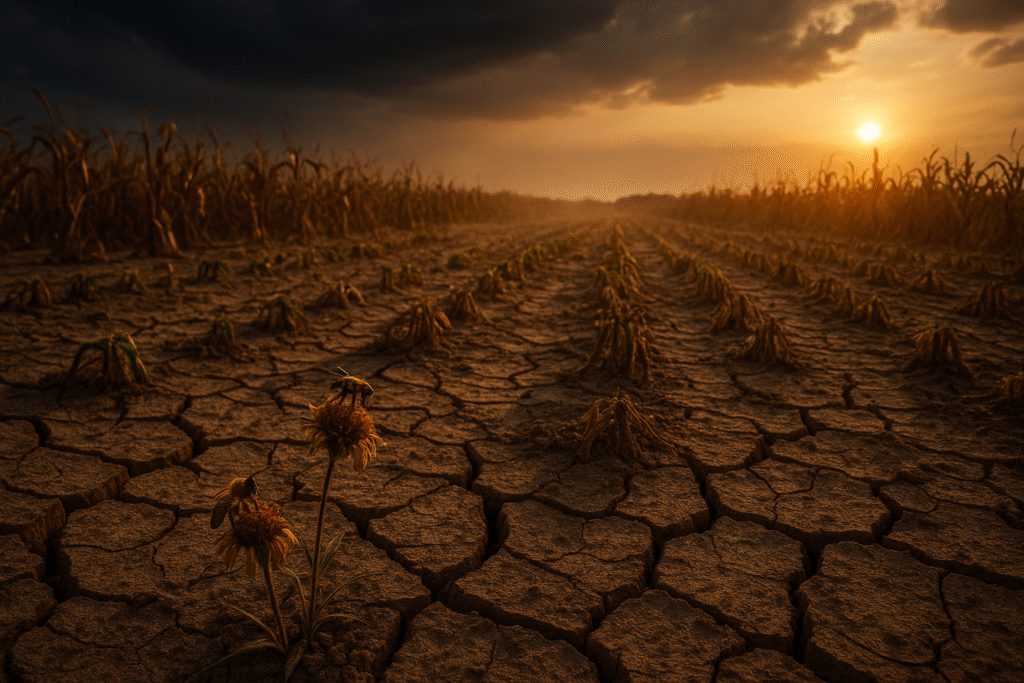
The Economy’s Hidden Tremors
Claim: Our economic systems borrow from a living world. When biodiversity fails, hidden shocks will ripple through.
Agricultural supply chains depend on pollinators, soil microbes, nutrient cycles, and pest control species. Their decline destabilises yields, food prices, and food security.
Ecosystem-based climate regulation (forests, wetlands, mangroves) buffers storms and sequesters carbon. Losing them forces us into expensive engineering substitutes—levees, carbon capture, desalination.
Insurance markets already sense rising risks: premiums surge, cover recedes, particularly in climate-sensitive zones.
Some nations are caught in a cycle: to repay debts, they exploit natural capital—logging, mining, land conversion—worsening loss, creating a negative spiral.
Substitute technologies (synthetic pollination, lab meat) are expensive, narrow, high-risk. They rarely replicate the diversity, resilience, and synergy of biological systems.
We build economies that treat nature as infinite. But when biodiversity crumbles, the illusion cracks—and the fallout is brutal.
Reconnecting the Broken Chains
Claim: Repairing broken links, not pretending nothing is broken, is our only path forward.
Conservation must scale: not just protected patches, but landscape connectivity, corridors, buffer zones. Only ~15 % of priority conservation landscapes in India lie within protected areas.
Restoration must be justice-oriented: revive ecosystems without displacing people, partnering with them.
Governance must be inclusive: local and Indigenous communities must lead; top-down models often fail.
Economy must change: internalize nature’s costs, adopt circular models, pay for ecosystem services, invest in nature-positive infrastructure.
Narrative shift: from “nature as backdrop” to “we are nature.” Social, economic, and ecological systems are inseparable.
We won’t fix every chain at once. But we can begin—by strengthening pollinator networks, restoring degraded lands, reconnecting fragmented habitats, and elevating community stewardship.
Conclusion
When biodiversity dies, we die. The hidden chains—soil microbes, pollinators, corridors, water cycles—are already cracking. The powerful may feel insulated; the vulnerable already feel the tremors. Our economic illusions and growth fantasies are built on borrowed capital from a living world.
We must name the broken links, face the fractures, demand justice, and begin repair. The question is not whether collapse will come—it’s when. Which chain will you, we, begin to reconnect today?
Author’s Note
I write because biodiversity is not a romantic ideal—it is our life support. The more we ignore the fractures, the closer we inch to systemic collapse. My deepest hope is that students, planners, and citizens read this and feel both the urgency and responsibility. This crisis is ours to respond to.
G.C., Ecosociosphere contributor.
References & Further Reading
- Advances in Ecosystem Services Valuation Studies in India —PMC
- Prioritizing India’s Landscapes for Biodiversity, Ecosystem Services & Human Well-Being —Nature
- Effects of Green Revolution Led Agricultural Expansion on Net Ecosystem Service Values in India —arXiv
- Natural Capital Accounting & Valuation of Ecosystem Services) —un.org
- Valuing Ecosystem Services Provided by Land Commons in India —CGSpace
- Economic Valuation of Ecosystem Services of National Zoological Park, New Delhi — Teri
- Ecosystem Valuation in Periyar Tiger Reserve —Wikipedia
- Economic Valuation of Tiger Reserves: Nagarjunasagar-Srisailam Wikipedia
- Economic Valuation of Ranthambore Tiger Reserve Wikipedia

